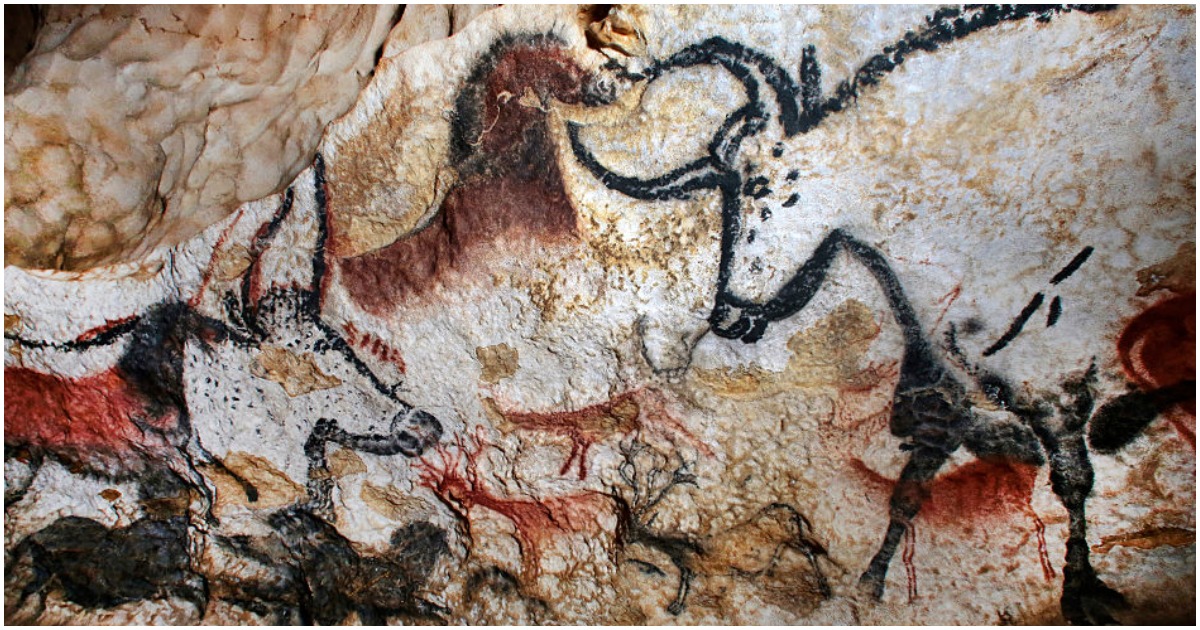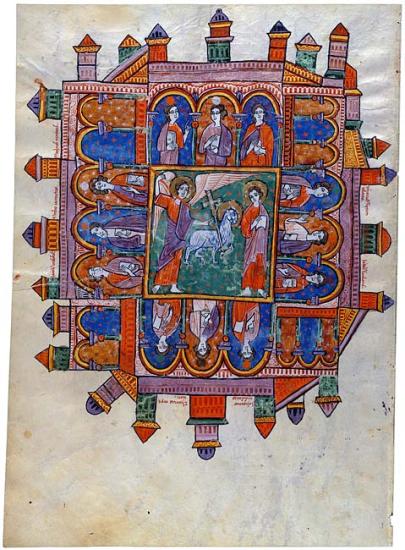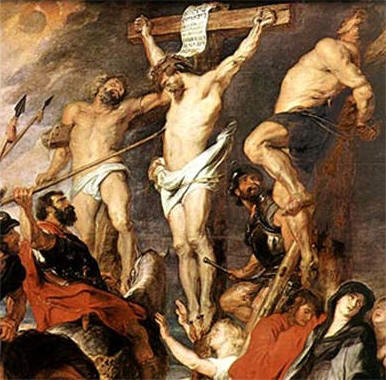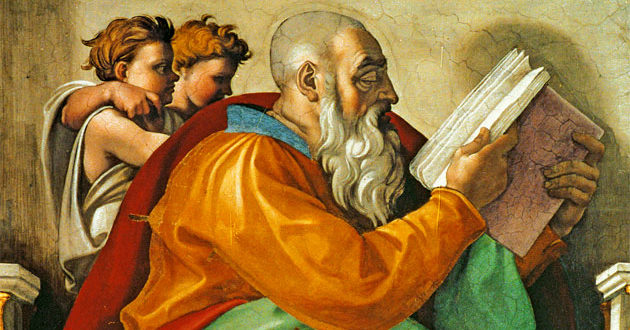 The alternate Hebrew Bible text for this Sunday in the Revised Common Lectionary is Zechariah 9:9-12: the only passage from the book of Zechariah found in the lectionary. Curiously, as I have noted before in these blogs, this passage is not one of the readings for Palm Sunday, although it is quoted in the accounts of Jesus’ triumphal entry into Jerusalem in Matthew 21:5 and John 12:15, and alluded to in Mark 11:1-11 and Luke 19:28-40 as well (both use the Greek word polon, “colt,” found in the Septuagint of Zech 9:9):
The alternate Hebrew Bible text for this Sunday in the Revised Common Lectionary is Zechariah 9:9-12: the only passage from the book of Zechariah found in the lectionary. Curiously, as I have noted before in these blogs, this passage is not one of the readings for Palm Sunday, although it is quoted in the accounts of Jesus’ triumphal entry into Jerusalem in Matthew 21:5 and John 12:15, and alluded to in Mark 11:1-11 and Luke 19:28-40 as well (both use the Greek word polon, “colt,” found in the Septuagint of Zech 9:9):
Rejoice greatly, Daughter Zion.
Sing aloud, Daughter Jerusalem.
Look, your king will come to you.
He is righteous and victorious.
He is humble and riding on an ass,
on a colt, the offspring of a donkey (Zech 9:9, CEB).
Like the CEB, most English translations read “victorious” here, following the Septuagint. But the Hebrew text has nosha’--literally, “one who is saved.” Carol and Eric Meyers, in their commentary on this text, propose that here it is God, not the king, who “is victorious over the enemies, with the result that the king is ‘saved,’ thereby enabled to assume power” (Meyers and Meyers 1993, 127). This is a very different idea of kingship, grounded not in the king’s victories as a warrior, but in God’s empowerment and deliverance (compare Zech 4:6).
The humble mount in Zechariah 9:9 derives from a long tradition in the ancient Middle East of processions where the king rode on an ass (Meyers and Meyers 1993, 129). This Bible passage catches the point of that tradition: by riding on an ass rather than a war horse or chariot, the king shows humility, and declares that he comes in peace. But the prophet dreams of a king who is not a warrior–who not merely claims to come in peace, but who really comes to end war:
He will cut off the chariot from Ephraim
and the warhorse from Jerusalem.
The bow used in battle will be cut off;
he will speak peace to the nations.
His rule will stretch from sea to sea,
and from the river to the ends of the earth (9:10).
No wonder Jesus’ first followers recognized his mission in these ancient words!
Yet curiously, Jesus’ modern American followers have moved in the opposite direction, embracing in our “law and order” rhetoric the language of war. In a seventeen-minute video appeal to his fellow Evangelicals, Phil Vischer, creator of the wonderful Veggie Tales series, briefly summarizes the history of race in America, and why Black Americans continue to face injustice today. In particular, Mr. Vischer points to the warfare language–specifically, the War on Crime and the War on Drugs–used by past administrations, Democrats and Republicans alike, to militarize our police, and to criminalize and incarcerate an entire generation of Black and Brown Americans.
Tara O’Neill Hayes, the Director of Human Welfare Policy at the American Action Forum, has the sobering statistics:
There are currently an estimated 2.2 million people incarcerated in the United States. The incarceration rate is now more than 4.3 times what it was nearly 50 years ago. This increase has led to the United States having the highest incarceration rate of any country in the world, 37 percent greater than that of Cuba and 69 percent greater than Russia. This high incarceration rate is not because crime has increased; in fact, crime rates have declined since the 1990s. Rather, the arrest rate increased dramatically, while sentences—particularly for drug crimes—have gotten longer. These policy changes have disproportionately affected low-income and minority populations, who now make up roughly three-fifths and two-thirds of the prison population, respectively.

In the wake of the very public, brutal murder of African American George Floyd by a white police officer, worldwide protests today call for justice and reform–including calls, specifically, to “Defund the Police.” Indeed, in Minneapolis where this horrific crime happened, a majority of the city council has pledged to “dismantle” that city’s police force. According to Minneapolis council president Lisa Bender,
“It is clear that our system of policing is not keeping our communities safe. Our efforts at incremental reform have failed, period.” Bender went on to say she and the eight other council members that joined the rally are committed to ending the city’s relationship with the police force and “to end policing as we know it and recreate systems that actually keep us safe.”
Some cities have already pursued this strategy, successfully. For example, Camden, NJ, which in 2013 had one of the highest murder rates in the country, “dismantled the entire police department, starting a community policing approach.”
The department un-hired, then hired back most veteran officers and then 150 new officers — 50% of officers are now minorities. . . . The new force has more officers on the streets out of their cars, having conversations and mostly listening. They go through de-escalation training. . . they are trained to use their words, and guns are a last resort.
Retired Chief Scott Thompson, who helped start the new program, describes the difference like this: “from day one. . . our officers would be guardians and not warriors.”
Of course many have (perhaps deliberately) misunderstood these calls to change how we think about crime and policing as calls to eliminate the police altogether. For example, PA Representative Guy Reschenthaler objected to police reform legislation in the House, claiming “The Democrats want to defund, dismantle and abolish the police.” Some have warned that if protesters are heeded, the result will be rampant crime and anarchy. For example, the president, in his June 20 rally in Tulsa, said
“If the Democrats gain power, then the rioters will be in charge and no one will be safe and no one will have control” . . . They want to dismantle police, he said, while freeing vicious MS-13 gang members, and he said that they want “rioters” and “looters” to “have more rights than law-abiding citizens.” “The silent majority is stronger than ever before,” Trump said, declaring the Republican Party “the party of Lincoln” and “law and order.”
However, in Camden, after the police changed their techniques to be “guardians and not warriors,” shootings and murders went down by 50% in two years.
Reflecting on Mr. Trump’s evocation of Lincoln, and re-reading these ancient words from Zechariah, I find myself remembering what Abraham Lincoln said to a fiery old woman who urged her President to regard Southerners as enemies to be destroyed: “Why, madam, do I not destroy my enemies when I make them my friends?”
At the National Prayer Breakfast five years ago, then-President Barak Obama called for humility and a commitment to peace from people of all faiths:
. . . Our job is not to ask that God respond to our notion of truth — our job is to be true to Him, His word, and His commandments. And we should assume humbly that we’re confused and don’t always know what we’re doing and we’re staggering and stumbling towards Him, and have some humility in that process. And that means we have to speak up against those who would misuse His name to justify oppression, or violence, or hatred with that fierce certainty. No God condones terror. No grievance justifies the taking of innocent lives, or the oppression of those who are weaker or fewer in number.
Without doubt, the imagery of warfare and struggle is part of the biblical witness. But Scripture also, in many places, subverts that imagery, transforming it unexpectedly into imagery of peace–as in Sunday’s reading from Zechariah. What would happen if we listened to those texts, rather than focusing on the others? What would happen if we listened to one another, and engaged in conversation, rather than physical and verbal assaults? What might happen if we all opened ourselves up to become, as Chief Thompson said, “guardians and not warriors”–instruments, as St. Francis prayed, of God’s peace?
![Title: Lift Every Voice and Sing, or, The Harp
[Click for larger image view]](http://diglib.library.vanderbilt.edu/cdri/jpeg/lift-every-voice8927xc.jpg)





 But as Theodore Hiebert has observed (“The Tower of Babel and the Origin of the World’s Cultures,” Journal of Biblical Literature 126 [2007]: 29-58), that traditional reading misses the reason the text of Genesis itself gives for building the city and the tower:
But as Theodore Hiebert has observed (“The Tower of Babel and the Origin of the World’s Cultures,” Journal of Biblical Literature 126 [2007]: 29-58), that traditional reading misses the reason the text of Genesis itself gives for building the city and the tower: Why does God do this? Perhaps because, as Argentinian Methodist theologian
Why does God do this? Perhaps because, as Argentinian Methodist theologian 

![Title: Church of the Holy Sepulchre [Click for larger image view]](http://diglib.library.vanderbilt.edu/cdri/jpeg/L28-HolySepulchre.jpg) The Feast of the Ascension comes forty days after Easter. This year, that is today, May 21. Typically, Protestant churches don’t make much of this: partly, because the Feast always falls on a Thursday, but mainly, I suspect, because we are vaguely embarrassed by the whole idea of the Ascension. In our jet-setting days, ascension is no big deal: most of us have gone up in airplanes, flying from one airport to another in a different city, state, or nation. Further, we know that if you keep going up, you do not breach the dome of the firmament and enter the divine realm of celestial glory. Instead, you leave the atmosphere of our planet, and enter the unimaginable vastness of space: where there is no longer “up” or “down.”
The Feast of the Ascension comes forty days after Easter. This year, that is today, May 21. Typically, Protestant churches don’t make much of this: partly, because the Feast always falls on a Thursday, but mainly, I suspect, because we are vaguely embarrassed by the whole idea of the Ascension. In our jet-setting days, ascension is no big deal: most of us have gone up in airplanes, flying from one airport to another in a different city, state, or nation. Further, we know that if you keep going up, you do not breach the dome of the firmament and enter the divine realm of celestial glory. Instead, you leave the atmosphere of our planet, and enter the unimaginable vastness of space: where there is no longer “up” or “down.” With Judas in “Jesus Christ, Superstar,”
With Judas in “Jesus Christ, Superstar,”  Already, we can learn much about God from other religions on this planet. Should we one day encounter the faith of an alien civilization, or somehow be able to gain access to the faith that moved the Stone Age cave painters, we could learn from them, too. But we Christians also have something to teach: the grand, unimaginable news that God has really done it–God has entered our reality of time and space in the scandalously particular person of Jesus of Nazareth. The Ascension declares that that same Jesus remains eternally God, a confession that, as
Already, we can learn much about God from other religions on this planet. Should we one day encounter the faith of an alien civilization, or somehow be able to gain access to the faith that moved the Stone Age cave painters, we could learn from them, too. But we Christians also have something to teach: the grand, unimaginable news that God has really done it–God has entered our reality of time and space in the scandalously particular person of Jesus of Nazareth. The Ascension declares that that same Jesus remains eternally God, a confession that, as ![Title: The Ascension [Click for larger image view]](http://diglib.library.vanderbilt.edu/cdri/jpeg/Mafa011.jpg)

 At the advice of the
At the advice of the 
 So, why these differences in a prayer we claim that Jesus taught us to pray? The language in the version of the Lord’s Prayer I learned melds the language in the two Gospel citations of this prayer (
So, why these differences in a prayer we claim that Jesus taught us to pray? The language in the version of the Lord’s Prayer I learned melds the language in the two Gospel citations of this prayer (




:max_bytes(150000):strip_icc():format(webp)/14983101064_9ca42eb6fe_k-5c3ea9dac9e77c0001778308.jpg) Similarly, in the New Testament, all four gospels (
Similarly, in the New Testament, all four gospels (







 All four Gospels connect Jesus’ last week on earth with Passover. But while in Matthew, Mark, and Luke, Jesus’ last supper with his followers is a Passover meal (
All four Gospels connect Jesus’ last week on earth with Passover. But while in Matthew, Mark, and Luke, Jesus’ last supper with his followers is a Passover meal ( From early on, Christian readers found in
From early on, Christian readers found in 



